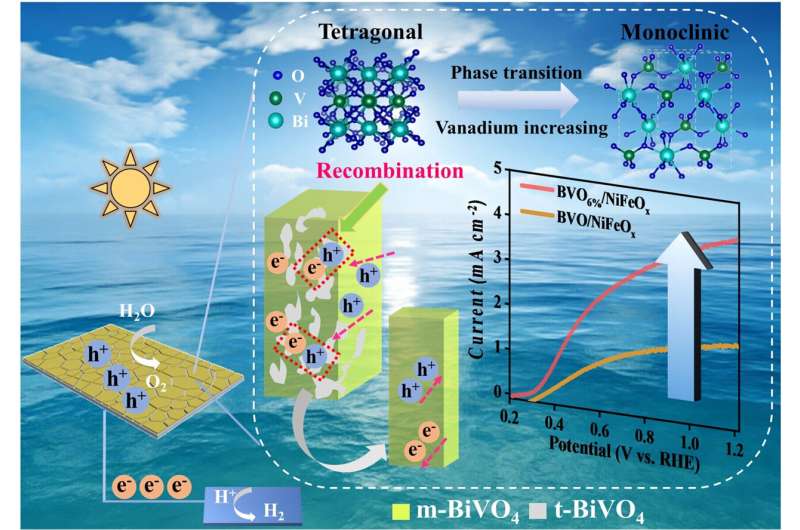This article has been reviewed according to Science X's editorial process and policies. Editors have highlighted the following attributes while ensuring the content's credibility:
fact-checked
peer-reviewed publication
trusted source
proofread
Researchers reveal key restriction of bismuth vanadate photoanodes prepared via pyrolysis method

Photoelectrochemical (PEC) water splitting is an ideal approach for converting solar energy into green hydrogen, and the controllable preparation and easy scalability of efficient photoanodes are crucial for practical application. Monoclinic phase bismuth vanadate (BiVO4) is a promising photoanode due to wide visible light utilization and good photoelectrochemical stability.
Compared to popular two-step preparation methods, the one-step pyrolysis method has many advantages such as simplicity, low cost, and applicability for the fabrication of uniform large-area BiVO4 photoanodes. However, the performance of intrinsic BiVO4 electrodes by the one-step method is not satisfied.
Recently, a research team led by Prof. Zhang Fuxiang from the Dalian Institute of Chemical Physics (DICP) of the Chinese Academy of Sciences (CAS) has revealed key factors constraining water oxidation performance of BiVO4 photoanodes prepared by one-step pyrolysis method: the loss of vanadium elements and the formation of tetragonal phase impurities.
The study was published in Angewandte Chemie International Edition on July 15.
The researchers found that the vanadium (V) has faster leaching kinetics than bismuth (Bi), resulting in the inclusion of a few tetragonal BiVO4 with poor charge transport ability, which is the key restriction of BiVO4 photoanodes prepared by one-step pyrolysis method.
To address this issue, they optimized the precursor consistent, and achieved the performance of 4.2 mA/cm2 at 1.23 V vs. RHE under simulated sunlight illumination, which was comparable to the BiVO4 electrode by two-step method. Additionally, the optimized one-step pyrolysis method is available for the controlled preparation of reliable large-area BiVO4 photoanodes with an area up to 25 cm2.
"Our work demonstrates the feasibility for the scalable preparation of efficient BiVO4 photoanodes, and paves the way for PEC water splitting towards practical industrial application," said Prof. Zhang.
More information: Nengcong Yang et al, Insight into the Key Restriction of BiVO4 Photoanodes Prepared by Pyrolysis Method for Scalable Preparation, Angewandte Chemie International Edition (2023). DOI: 10.1002/anie.202308729
Journal information: Angewandte Chemie International Edition
Provided by Chinese Academy of Sciences





















